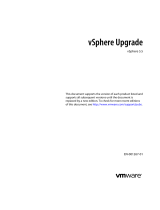
Abstract
This HOWTO describes how to set up a Red Hat Linux 8.0 Pre-boot eXecution Environment (PXE)
server and how to integrate a Red Hat Linux 8.0 client with the PXE server. Additionally, this HOWTO
explains how to use Linux images on a PXE server and how to configure a client for PXE.
Text conventions
This HOWTO uses the following conventions to distinguish elements of text:
Menu options, Command names, Dialog box
names, and Screen names
These elements appear in initial capital letters and may appear in
boldface for emphasis.
User input (commands to be typed)
User input appears in a different typeface
and is highlighted in gray.
Scripts and files
The content of the scripts and files appears
in a different typeface and is highlighted in
gray with a border around it.
Boldface text should be located on one line
instead of on multiple lines as shown in the
samples; formatting in this document
prohibits correct usage.
Comments included in the scripts are listed
in blue font for explanation purposes and
marked with comment markers (#) so that the
code can be copied and pasted.
Required hardware and software
This section describes hardware and software requirements mandated for PXE functionality.
For the PXE server
Setting up a Linux PXE server requires an HP ProLiant server and two key software components that
provide basic PXE functionality: (1) the DHCP server and (2) the TFTP server. Although the DHCP
server and the TFTP server components can reside on separate servers, this paper describes a method
that places these components on the same server.
For a PXE server to be useful, additional server software is required such as NFS, FTP, HTTP, and
Samba. Pxelinux allows further configuration based on a directory and configuration files versus
modifying the dhcpd.conf file directly when using the DHCP and TFTP server components alone. The
additional file sharing services can reside on the same PXE server or can exist as a separate server on
the network. The described method in this paper places NFS and FTP on the same PXE server.
The PXE portion will be handled by the syslinux package. The Syslinux 1.75 package included in Red
Hat Linux 8.0 is broken; therefore, version 2.00 or later should be used.
For the clients
The clients must have a PXE-enabled network interface controller (NIC). To integrate the clients with
the PXE server, this paper describes a process using a kickstart file.
2






















